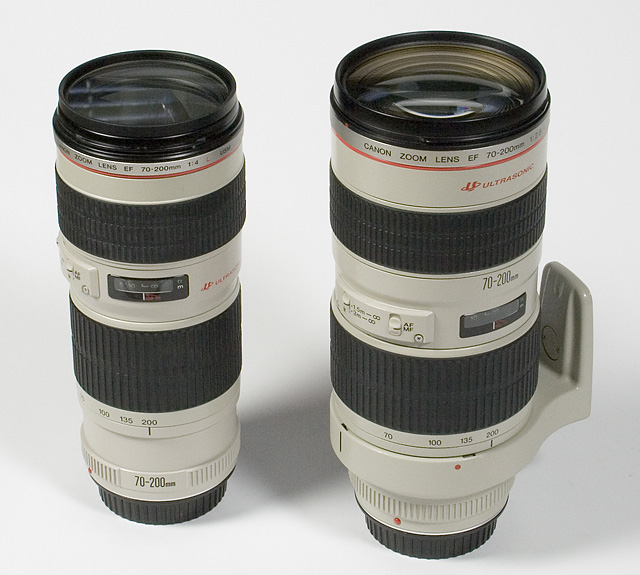|
Page 1 of 3
Review by Klaus Schroiff, published October 2005
Special thanks to Axel Voss and Anthony Harling for providing samples of this lens!
Introduction
When Canon released the Canon EF 70-200mm f/4 USM L back in 1999 it was a long awaited
lens - not because it took so long from the announcement till availability but simply
because the community was eagerly expecting a state-of-the art prosumer tele zoom.
Till the EF 70-200mm f/4L saw the light serious amateurs had to choose between the
affordable and good but also very aged EF 100-300mm f/5.6L and an extremely expensive and
heavy-weight EF 70-200mm f/2.8 USM L.
As usual we'll look into the performance of this lens using a mainstream APS-C DSLR
(EOS 350D) where its field-of-view is equivalent to 116-320mm on full format cameras.

The optical construction is made of 16 elements in 13 groups, including 1 CaF2 and 2 UD elements.
The min. focus distance is 1.32m resulting is a max. object magnification of ~1:5 at 200mm.
The lens features 8 aperture blades. The filter size is 67mm.
The lens is pretty compact for a moderate aperture tele zoom with a size of 76x172mm
and a weight of 705g so unlike its f/2.8 brothers and sisters it doesn't feel like a
brick in your camera bag. Adding the (included) barrel-shaped hood increases the
length substantially as you can observe in the image above.
Here's a comparison between the EF 70-200mm f/4 USM L (left) and the EF 70-200mm f/2.8 USM L (right).

The lens does not extend during zooming and thanks to its inner focusing system the front element
does not rotate so using a polarizer is no problem - unless you attach the hood of course.
The build quality of this lens is excellent - no wobbling and smooth controls.
The lens features a ring-type USM drive so AF speed is extremely fast. When combined with
the Canon EF 1.4x (II) converter the speed is reduced as a side effect of the smaller max.
aperture (one stop slower). In theory it is also possible to use a Canon EF 2x (II) converter
but the effective max. aperture of this combination drops to f/8 so all consumer grade
Canon EOS (D)SLRs will disable AF operations - AF is retained on EOS 1(D) series cameras as
well as on the EOS 3.
By default the EF 70-200mm f/4L does NOT come with a dedicated tripod mount but it is
available as an option either in black or white (the black one is slightly cheaper).
The lens may be relatively light-weight but used on a tripod the camera-lens balance is
quite bad so if you intend to use here the optional tripod mount is a good investment.

|